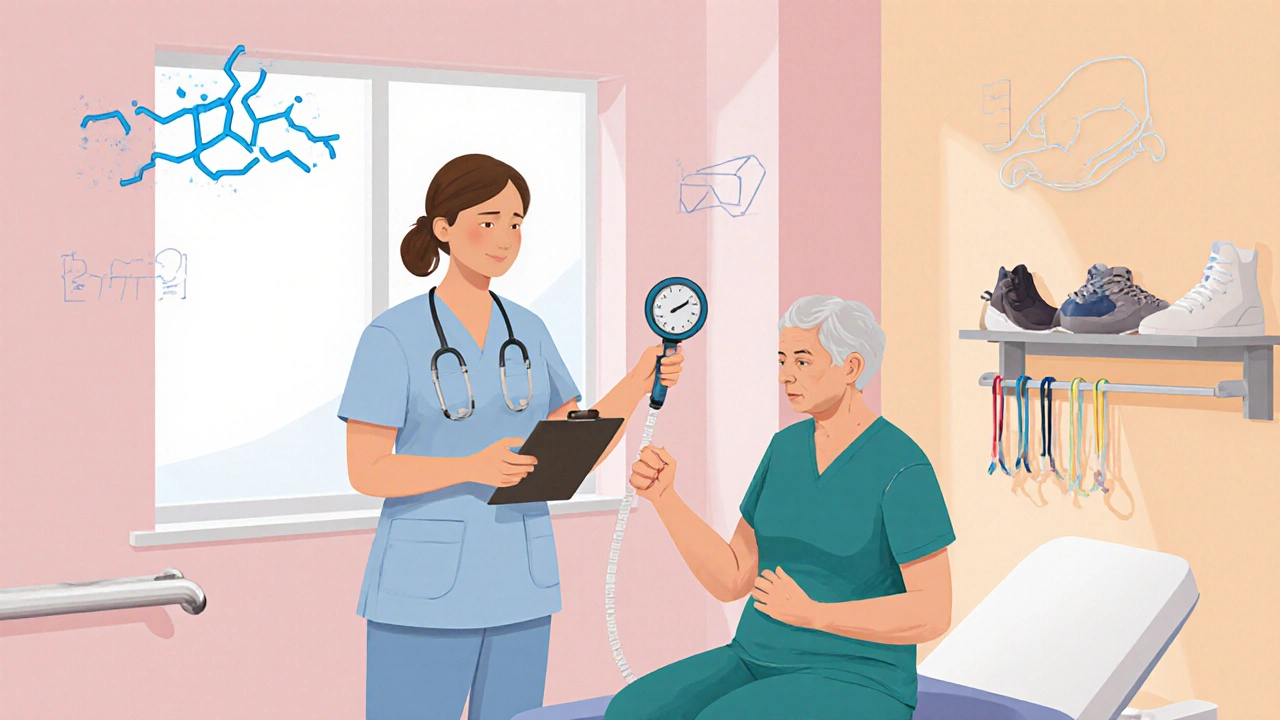Skeletal Muscle Conditions: What They Are and How to Deal With Them
When your muscles feel sore, weak, or just don’t work the way they used to, you’re probably dealing with a skeletal muscle condition. These are problems that affect the muscles attached to your bones – the ones that let you move, lift, and stay upright. Below we break down the most common issues, why they happen, and what you can do about them.
Common Skeletal Muscle Problems
Muscle strains are the everyday injuries that happen when you over‑stretch or overload a muscle. They range from mild pulls that heal in a week to severe tears that need weeks of rehab.
Myopathies are a broader group of diseases where the muscle fibers themselves become damaged. Some are inherited, like muscular dystrophy, while others develop later in life, such as inflammatory myopathies (polymyositis, dermatomyositis).
Rhabdomyolysis is a serious condition where muscle tissue breaks down fast enough to release toxic proteins into the blood. It can be triggered by extreme exercise, crush injuries, or certain drugs.
Muscle cramps and spasms are often harmless but can be linked to electrolyte imbalances, dehydration, or nerve irritation. When they happen often, they deserve a closer look.
How to Spot a Problem
Most muscle issues show up with a few tell‑tale signs:
- Persistent weakness that doesn’t improve with rest
- Pain that worsens with activity or pressure
- Swelling, bruising, or a feeling of tightness
- Difficulty performing everyday tasks like climbing stairs or lifting groceries
If you notice any of these for more than a few days, it’s worth getting checked out. A quick visit to your GP or a sports medicine doctor can rule out serious causes and point you toward the right treatment.
Diagnosis Made Simple
Doctors usually start with a chat about your symptoms and medical history. They’ll follow up with a physical exam, checking strength, flexibility, and reflexes. Imaging tests—like an X‑ray, MRI, or ultrasound—help visualize any tears or inflammation.
Blood tests are key for conditions like rhabdomyolysis (look for high creatine kinase) or inflammatory myopathies (elevated CK and auto‑antibodies). In some cases, a muscle biopsy is needed to confirm an underlying disease.
Treatment Options You Can Try
Treatment depends on what’s causing the issue, but most plans combine these elements:
- Rest and activity modification: Give the muscle a break, then gradually re‑introduce movement.
- Physical therapy: Targeted exercises rebuild strength and improve flexibility without over‑loading the tissue.
- Medication: Pain relievers, anti‑inflammatories, or disease‑specific drugs (like steroids for polymyositis) can reduce symptoms.
- Nutrition and hydration: Adequate protein, electrolytes, and water support muscle repair.
- Heat or cold therapy: Ice can curb swelling after an acute injury; heat helps relax chronic tightness.
For serious conditions like muscular dystrophy, disease‑modifying therapies and regular monitoring are essential. Always follow your doctor’s advice and keep appointments for ongoing evaluation.
Living With Muscle Conditions
Even after treatment, many people need to adjust daily habits. Here are a few practical tips:
- Start each day with gentle stretching to keep muscles supple.
- Break up long periods of sitting with short walks or light leg lifts.
- Use ergonomic tools—like supportive chairs or wrist rests—to reduce strain.
- Track your symptoms in a journal; patterns can help you and your doctor fine‑tune care.
- Stay informed about new research; clinical trials often bring cutting‑edge options.
Remember, most skeletal muscle conditions improve with the right mix of rest, rehab, and medical care. Listening to your body and seeking help early can prevent small issues from becoming big setbacks.
Got more questions? Keep exploring our site for deeper dives into specific disorders, medication guides, and lifestyle hacks that keep your muscles moving smoothly.
-

How Occupational Therapy Helps Manage Skeletal Muscle Conditions
Explore how occupational therapy helps manage skeletal muscle conditions, from assessments to adaptive tools, and learn practical tips for gaining independence.
-

Skeletal Muscle Conditions Explained: Science, Causes, and Prevention
What causes muscle strains, cramps, tendinopathy, and loss of muscle-and what actually prevents them. Clear, science-based tips you can use today.